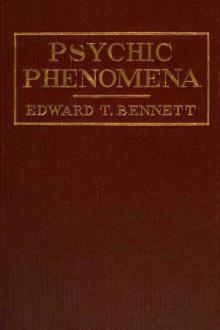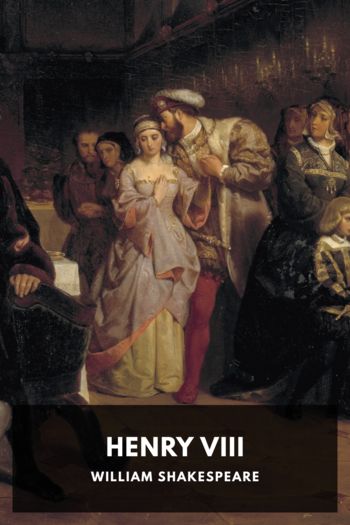Don Quixote by Miguel de Cervantes Saavedra (electric book reader TXT) 📕

Description
Don Quixote is a novel that doesn’t need much introduction. Not only is it widely considered the greatest Spanish literary work of all time, one of the greatest literary works in history, and a cornerstone of the Western literary canon, it’s also considered one of the first—if not the first—modern novels.
This Standard Ebooks edition is believed to be the first ebook edition of Don Quixote to feature a full transcription of translator John Ormsby’s nearly 1,000 footnotes. Ormsby as an annotator deftly explains obscure passages, gives background on the life and times of 1600s Spain, references decisions from other contemporary translators, and doesn’t hold back from sharing his views on the genius—and flaws—of Cervantes’ greatest work.
The story is of the eponymous Don Quixote, a country noble who, in his old age, reads too many chivalric romances and goes mad. After convincing his grubby servant, Sancho Panza, to join him as his squire, he embarks on an absurd and comic quest to do good and right wrongs.
Today Don Quixote’s two volumes are published as a single work, but their publication came ten years apart. Cervantes saw great success with the publication of his first volume, and appeared to have little desire to write a second volume until a different author wrote a spurious, inferior sequel. This kicked Cervantes into gear and he wrote volume two, a more serious and philosophical volume than the largely comic first volume.
Despite being written in 1605 and translated in 1885, Don Quixote contains a surprising amount of slapstick laughs—even for the modern reader—and narrative devices still seen in today’s fiction, including meta-narratives, frame narratives, and metafiction. Many scenes (like Quixote’s attack on the windmills) and characters (like Sancho Panza and Lothario) are so famous that they’re ingrained in our collective culture.
Read free book «Don Quixote by Miguel de Cervantes Saavedra (electric book reader TXT) 📕» - read online or download for free at americanlibrarybooks.com
- Author: Miguel de Cervantes Saavedra
Read book online «Don Quixote by Miguel de Cervantes Saavedra (electric book reader TXT) 📕». Author - Miguel de Cervantes Saavedra
El Rey es mi gallo—an exclamation borrowed from cockfighting. The winning cock was called el Rey. ↩
Proverb 221. ↩
Proverb 223. ↩
Properly, a vile kind of wine made from the refuse and washings of the winepress. ↩
Proverb 191. ↩
A metal ornament worn by peasant girls somewhat after the manner of a locket. ↩
The richest ordinary velvet being three pile. ↩
Fit for any enterprise; the shoals of the Flemish coast being regarded with great awe by the Spanish sailors. ↩
It is difficult to see why Cervantes should have gone out of his way to make such a cold-blooded monster of the fair Quiteria as this gratuitous admission of his makes her. ↩
Proverb 27. ↩
For the Giralda of Seville, and the bulls of Guisando, see notes 543, 544, and 545. The Angel of the Magdalena was a weathercock on a church of that name at Salamanca; the Vecinguerra was the sewer draining the Potro quarter at Cordova. The other names are those of fountains in or on the outskirts of Madrid, of which I think the Lavapiés is the only one now in existence. ↩
The hamlet referred to is clearly that of Ruidera, about five leagues southeast of Argamasilla, near the Laguna del Rey, the lowest of the chain of lakes from which the waters of the Guadiana flow into the plain of La Mancha. From thence across the hills it is about two leagues to the cave of Montesinos, which lies a little to the north of the ruins of the castle of Rocafria (v. map). There can be no doubt that Cervantes visited the spot, but he has somewhat exaggerated the dimensions of the cave. The mouth is not more than eight or ten feet wide, or the depth more than fifty or sixty; nor is the descent so steep as to make a rope requisite. It is, in all probability, an ancient mine of Roman or possibly Carthaginian origin. The map of the district given in Pellicer’s edition of Don Quixote misplaces the cave and several other points, and is entirely misleading. ↩
A line from the ballad in the Guerras Civiles de Granada, “Estando el Rey Don Fernando.” ↩
Proverb 175. ↩
The Peña de Francia is a mountain near Ciudad Rodrigo, and one of the holy places of Spain in consequence of the discovery of an image of the Virgin there in the fifteenth century. The Trinity of Gaeta is the chapel dedicated to the Trinity above the harbour of Gaeta. ↩
Montesinos is the hero of half a dozen ballads belonging to the Carlovingian cycle, but does not figure in any of the French romances. According to the ballads he was one of the Peers, and son of Count Grimaltos, or Grimaldos, by a daughter of Charlemagne. He owed his name to having been born in a forest (monte), where his father and mother were wandering, banished from court by the machinations of the traitor Tomillas. It appears to have been connected with the cave from a very early period, and according to one of the oldest of the ballads the adjacent Castle of Rocafria, or Rocafrida, mentioned in this note, was the residence of Rosaflorida, a lady who was enamoured of him de oídas—from hearsay. Clemencín says they were married and lived there; but one of the ballads represents him as marrying Guiomar, a converted Saracen. It is odd that, with the castle close at hand here, Cervantes should not have referred to it. ↩
Merlin has been claimed by the Bretons as one of themselves, but of course he was a Welshman. In Mallory’s Arthur he is called “a devil’s son.” ↩
These are an adaptation of lines from the ballad—
“Oh Belerma! Oh Belerma!
Por mi mal fuiste engendrada.”
Durandarte and Belerma, like Montesinos, are only to be found in the Spanish ballads of the Carlovingian cycle; Mila y Fontanals, however, thinks that in the name of the former there may be a reminiscence of that of Roland’s sword Durandal, or Durendal. ↩
The number of the lakes of Ruidera is variously stated. In Chapter XVIII Cervantes himself speaks of seven; here he makes them ten, if Ruidera herself is to be included. Clemencín says there are fifteen. Pascual Madoz, in his Geographical Dictionary of Spain, says fifteen in one place, and fourteen in another. Ford, in the Handbook, says there are eleven, which was the number I counted in a ramble down the valley some years ago. Most of them are mere tarns, but two or three are of considerable extent, the largest, La Colgada, being about two miles long. In most instances there is no visible communication between them. It is strange that Cervantes, who so often bestows wood and water, hills and vales, on Don Quixote’s parched, flat, treeless country, should not have a word to say for this pretty winding valley, with its succession of Claude-like vistas that would charm the eye anywhere, but here, after the bare brown steppes of La Mancha, seem veritable landscapes of Arcadia. ↩
The boundaries of New Castile and the kingdom of Murcia meet in the upper portion of the valley, the head of which belongs entirely to the latter. ↩
The Guadiana, after issuing from the Ruidera valley near the picturesque old castle of Peñaroya, traverses the plain of La Mancha and disappears from sight a little to the north of Argamasilla, to reappear





Comments (0)